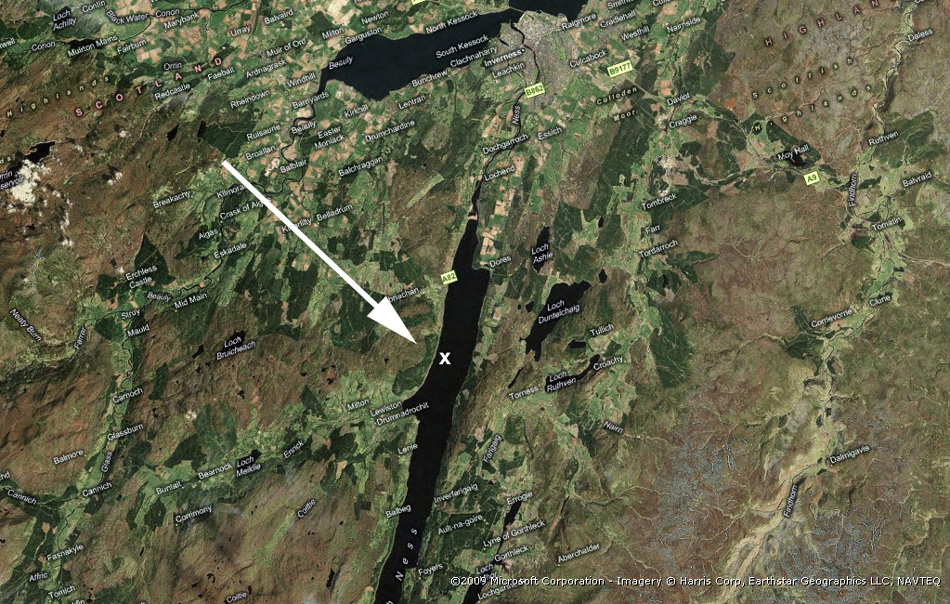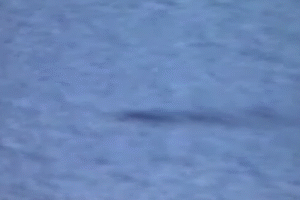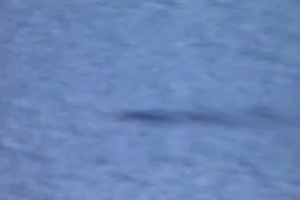
Loch Ness video by Gordon Holmes May 2007
A preliminary study by Dick Raynor.
At approximately 2200 on Saturday 26th May 2007 Gordon Holmes observed and recorded a disturbance on the surface of Loch Ness.
The day had been one of quite heavy rain lasting most of the day, but it cleared around early evening and from my own recollection working as a boat skipper on the loch that day the evening was comparatively mild and the wind had swung round so it was approximately from the North-West. I think the wind direction had been from the North or North East earlier, making it a rather uncomfortable day on the loch with no shelter in Urquhart Bay. By the time Mr Holmes took his video there were some small waves still moving NE to SW along the loch, although the high-level wind was running almost directly across the loch and so not producing obvious waves. The following morning Mr Holmes came to my departure point and showed me the video which I was able to view only through the small viewfinder of his camcorder. The motion was interesting and with no obvious explanation that I could see.
The video was taken from a layby on the A82 road a little over two miles from Drumnadrochit at 57.344192 N, 4.420871 W.
(see FlashEarth image at http://www.flashearth.com/?lat=57.344192&lon=-4.420871&z=19.1&r=340&src=msl)

Map showing location of disturbance, X, and approximate wind direction arrowed.
The point of the white arrow is near to the summit of Meall na h-Eilrig, 465m a.s.l.
It is known from personal observation that turbulent conditions are created when a North Westerly wind crosses the loch, with the air flowing over a 465m hill and then crossing the loch 450 m lower in less than 1 km. A short timelapse video filmed from Dores in the NE corner of the loch illustrates this.
| Launch in external player |
Turbulence at Urquhart Bay 6 MB .wmv file.
The hill generating the cloud on the mid-right of the image is Meall na h-Eilrig. Towards the end of the sequence the high level clouds can be seen moving to the left across the loch, while the lower level wind goes along the loch.
Mr Holmes video is in several sections and runs for about 2 minutes and 36 seconds. The disturbance was evidently hard to find in the viewfinder and there is some zooming in and out. The Youtube link at the top shows part of the original footage, and below are some stabilised sections converted to animated gif files.


In full versions of the footage, a second similar disturbance can be seen at one point, some 100 metres further away than the one that Mr Holmes zoomed in on.
I have had the opportunity to examine quite a number of Loch Ness videos and films over the past 40 years and I have not seen one like this before. The disturbance appears to move from right to left, against the prevailing waves, and leaves only a single decaying track behind it. In my opinion this rules out swimming creatures, which would leave a v-shaped wake. It is not an object under the surface because such objects would not be visible at this angle of view, and they would still create a wake. Careful examination suggests to me that the disturbance seems to progress in an irregular manner, almost as if there was a localised down-draught of air playing on the surface. I have seen small whirlwinds lifting up spray under stormy conditions, but I cannot see any spray being lifted in this video, which leads me to prefer a down-draught rather than an updraft.
I am particularly intrigued by a passage in Journal of Meteorology ..."a water-devil or whirlwind consists of a central core of ascending currents surrounded by an outer region of descending currents..." and wonder if the descending outer current could be sufficiently vigorous to create the observed effect without the rising current being strong enough to raise a visible quantity of water?
DR 5th May 2009

To the right of the castle tower are a number of dark streaks or "windrows" caused by localised turbulent air interacting with the water surface. These are of course not as well developed as Mr Holmes' video but should help the reader to understand what may be seen on an "ordinary" day.
DR 31st March 2010.
Below is a more recent video I recorded near Tor Point showing much larger windrows resembling fast moving and sometimes short-lived dark shapes which I believe are the most likely explanation for the subjects of Gordon Holmes' 2007 video. Gordon does not agree with my assessment on this matter but we continue to share data and ideas on other aspects of our studies at Loch Ness.
DR 27th November 2014.